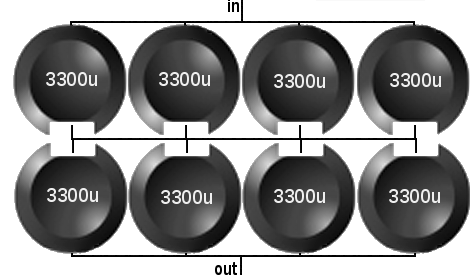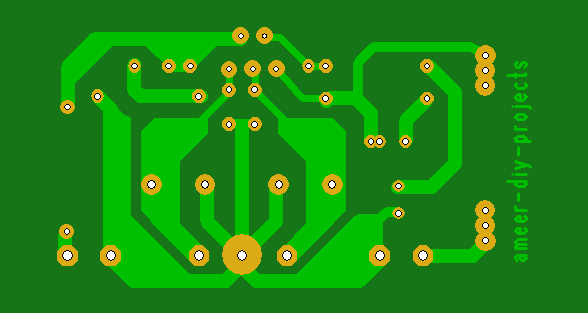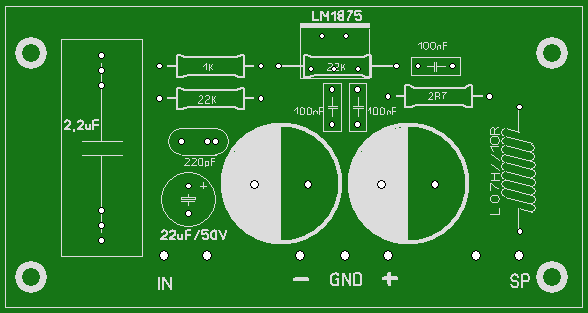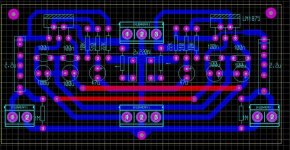This could then if what you wrote is true the amp of my dreams. Can you make it 'sound' like a 300B SET? I do not see myself getting into DIY amp making though..You can cause an LM1875 to imitate just about any other amplifier. So, you're not stuck with just one sound.
If you can indeed create such a mythic beast, and when my ships come in, and all the world is finally okay, and the stars are all aligned just so, perhaps I could tempt you to even make for me one
Suggesting that our Chinee Friends are erm.. Making their Own Chips.. still.
Yeah, don't they know in the Yoonaited States of Emily Carr, they call it 'fries'?
don't connect them to your amp... 
kidding... you can find many suggestions if you have time to search on how your amp should be built in a way that your speakers may not be harmed...
simple but affects the sound --> simply put an electrolytic capacitor at your amp speaker output in series with the amp. (+) of elco to the amp out terminal, (-) goes to (+) terminal of your speaker. use about 2200 uF/50 volt
please CMIIW
kidding... you can find many suggestions if you have time to search on how your amp should be built in a way that your speakers may not be harmed...
simple but affects the sound --> simply put an electrolytic capacitor at your amp speaker output in series with the amp. (+) of elco to the amp out terminal, (-) goes to (+) terminal of your speaker. use about 2200 uF/50 volt
please CMIIW
That's called output caps, right? If i get it right (again, i'm a total newbie) those are for turn on delay, so the speaker won't be damaged by the amps turn-on noise.
I think i am going to simply build the diyaudio speaker protection board, it doesn't look too complicated.
I think i am going to simply build the diyaudio speaker protection board, it doesn't look too complicated.
the output from amplifiers is AC.................. --> simply put an electrolytic capacitor at your amp speaker output in series with the amp. (+) of elco to the amp out terminal, (-) goes to (+) terminal of your speaker. use about 2200 uF/50 volt
..............
You cannot just connect the +ve side of a polar electrolytic to either of the output terminals.
Either use a non polar capacitor, enormous and expensive,
or
use a bi-polar that is much smaller and less expensive but not generally available in the big sizes needed for a wideband 4ohms
or 8ohms speaker.
or
use back to back (or front to front) polar capacitors connected in series that can tolerate some AC voltage.
A 100W into 8ohms amplifier puts out +-40Vpk and needs a 50V capacitor that can tolerate ~40V in both directions.
Oh,
a 2200uF capacitor feeding an 8ohms speaker will start to roll off @ ~90Hz and be down by ~3dB @ 9Hz.
Even worse for a 4ohms speaker, it starts to roll-off at 180Hz and down by 3dB @ 18Hz.
Use 4700uF, or 10mF, for 8ohms and double those values for 4ohms.
Last edited:
Nice Thread! I am a total noob and i am going to try this soon. I have a pair of irreplaceable speakers (Fostex fe208Σ), how do i make sure that they won't be harmed in any way?
For split rail amplifier, this DC filter (see image) goes series with the speaker negative.

With LM1875, 25v or 35v or 50v caps will do for this filter. As shown, it is 8 of exactly the same model cap. A larger value should be used if the speakers are same or larger than footlockers; but, that is rather uncommon.
My test speaker is equipped with the device shown in the photo (in series to the speaker negative).
For a more compact unit, it is possible to use 4 of 6800uF caps, arranged series parallel (6800u||6800u series to 6800u||6800u).
P.S.
Alternatively, speaker protection boards are generally available.
Got it (6600u~6800u). It looks like it could build up enough charge to cause a shock. Mine never shocked me; but, that does look possible. Question: Should it have a bypass resistor, and what would a ballpark/estimated value be?...use back to back (or front to front) polar capacitors connected in series...Use 4700uF, or 10mF, for 8ohms...
Hey Gychang -
Hear that??!!
Famous!!
Someday I'm gona be famous too!
Bluto
thanks, I am basically hobbiest wood person without a table saw... I wish I can follow a schematic since I have a solder gun..., I know the thread seems to be old, but best I can wish for is a ready kit using this chip (which one?), and have to sort out connection and transformer..., which is new venture for me.
Can someone point to a transformer (web site) that will work?
Notes...
I would like to see board space for double the number of electrolytic caps, because it is really hard to buy perfect caps.
All 3!
Additional pads for paralleling the electrolytic caps, gives you a most automated way to improve the cap quality. So, double up the in- coupler, And double up the power decoupling caps.
A good size allowance for each decoupling cap is 10mm diameter, 5mm pin spacing.
Also, change the pads on the 100n to the smaller size for ceramic disc, and in that way (wrong thing won't fit) you can easily prevent ringing bypass.
Fix needed: Input load, 22k||220p make a trip to nowhere--that needs a ground trace added.
Move the LM1875 to the edge of the board so that a heatsink can be used more easily.
Add an additional via and trace for supporting a 2uF electrolytic cap at input. Also, there's a decent polyester cap in a somewhat less than 2cm size, and someone might want to use that too.
I would like to see board space for double the number of electrolytic caps, because it is really hard to buy perfect caps.
All 3!
Additional pads for paralleling the electrolytic caps, gives you a most automated way to improve the cap quality. So, double up the in- coupler, And double up the power decoupling caps.
A good size allowance for each decoupling cap is 10mm diameter, 5mm pin spacing.
Also, change the pads on the 100n to the smaller size for ceramic disc, and in that way (wrong thing won't fit) you can easily prevent ringing bypass.
Fix needed: Input load, 22k||220p make a trip to nowhere--that needs a ground trace added.
Move the LM1875 to the edge of the board so that a heatsink can be used more easily.
Add an additional via and trace for supporting a 2uF electrolytic cap at input. Also, there's a decent polyester cap in a somewhat less than 2cm size, and someone might want to use that too.
Last edited:
Notes...
I would like to see board space for double the number of electrolytic caps, because it is really hard to buy perfect caps.
All 3!
Additional pads for paralleling the electrolytic caps, gives you a most automated way to improve the cap quality. So, double up the in- coupler, And double up the power decoupling caps.
A good size allowance for each decoupling cap is 10mm diameter, 5mm pin spacing.
Also, change the pads on the 100n to the smaller size for ceramic disc, and in that way (wrong thing won't fit) you can easily prevent ringing bypass.
Fix needed: Input load, 22k||220p make a trip to nowhere--that needs a ground trace added.
Move the LM1875 to the edge of the board so that a heatsink can be used more easily.
Add an additional via and trace for supporting a 2uF electrolytic cap at input. Also, there's a decent polyester cap in a somewhat less than 2cm size, and someone might want to use that too.
These values are appropriate?
Attachments
Not yet.These values are appropriate?
So, I suggest that you use this chip, prior to the expense of developing boards for it.
Not yet.
So, I suggest that you use this chip, prior to the expense of developing boards for it.
Can I get good yields from the project?
A real LM1875 can be set up to imitate any other amplifier. It can perform in a very wide variety of applications, not only audio. It does a nice job for making custom amplifiers.Can I get good yields from the project?
However, notice the output and efficiency versus loading mentioned in the datasheet. That is making a Parallel LM1875 (two chips in tandem for 50W mono) amplifier look like a good idea. Also, that parallel could drive modern 4 ohm speakers easily (solo chip doesn't do that so easily, see datasheet).
Look at the area enlosed inside the signal input loop.These values are appropriate?
It is enormous.
That will pick up interference !
Dear All,
After one week my EI transformer burned. 230V 15V-0-15V(2A).
even for 30% volume my speakers(chr-70) filled my room with sound. Can any one suggest is my transformer undersized. The transformer quality is not good as per my observation.
I am using below chip amp lm1875 stereo
https://www.eight-audio.com/products/ea-2-channel-20watts-lm1875-chip-amplifier
Thanks
Nag.
After one week my EI transformer burned. 230V 15V-0-15V(2A).
even for 30% volume my speakers(chr-70) filled my room with sound. Can any one suggest is my transformer undersized. The transformer quality is not good as per my observation.
I am using below chip amp lm1875 stereo
https://www.eight-audio.com/products/ea-2-channel-20watts-lm1875-chip-amplifier
Thanks
Nag.
- Home
- Amplifiers
- Chip Amps
- Beginner's Gainclone, HiFi LM1875, The Amplifier Board



